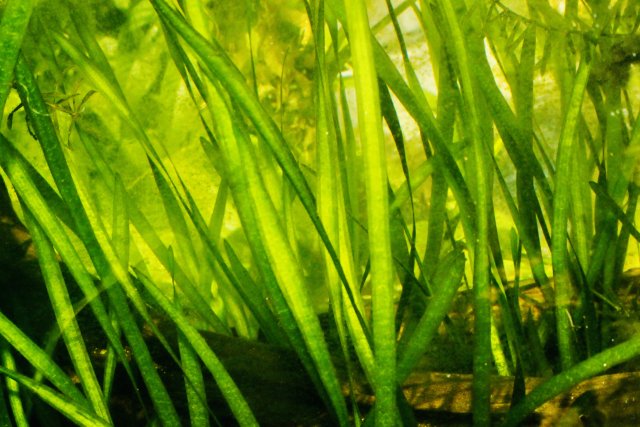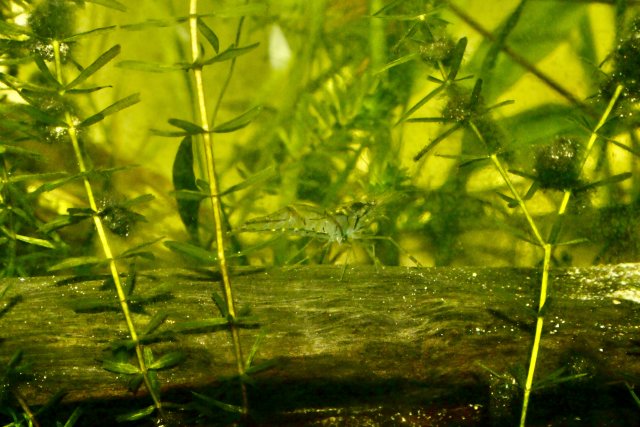Cleaning gravel for tanks with 500g or more
- Thread starter qguy
- Start date
You are using an out of date browser. It may not display this or other websites correctly.
You should upgrade or use an alternative browser.
You should upgrade or use an alternative browser.
For those with >500g tanks with gravel, do you gravel vac your tank or the water changes is enough to maintain water quality ?
What you tend to find is that once you get to a certain tank size, what with the larger surface area and depth, it becomes increasingly more difficult to vacuum substrate at maintainance day. So, for that reason you see a lot of bigger tanks with bare bottoms or very minimal decor. I have a 360g tank with just a few large rocks and driftwood, if it had substrate it would be a right pain to vacuum.
But to answer your question. If you did have substrate but you never vacuumed it, then yes water changes would keep your water pretty good, BUT, the amount of water changes you may need to do to compensate for the heavy nitrate production in your substrate, may be more than the amount of water changes you'd need to do compared to a bare bottom or well vacuumed substrate.
If I did ever choose to have a huge tank with gravel i'd have to have a few powerful powerheads to ensure very little waste settled on the gravel. I'd ensure any waste was directed to my outlet so it collected in my filter where I could very easily remove it on maintainance day.
I saw a really cool tank once where they did a moving substrate using a medium weight sand. It turned the substrate into a fluidized sand bed, prevented detritus build up, and recreated the natural look of the sand boils of central Florida. This would be challenging in all but a large tank and probably requires some intentional designing, but the result is very cool.
Not my videos.
If you have never seen these before this video has a good shot at 2:30
Fern Hammock Springs - YouTube
Here is another one
Sand Boil / Florida, 2014 - YouTube
Not my videos.
If you have never seen these before this video has a good shot at 2:30
Fern Hammock Springs - YouTube
Here is another one
Sand Boil / Florida, 2014 - YouTube
Last edited:
Best approach is to: 1) minimize gravel / substrate and 2) run a water circulator or pump near the bottom
All of my tanks are on a drip water change system and I seldom siphon the bottom. I keep a fine layer of pool filter sand in most tanks and have come to embrace the mulm...
All of my tanks are on a drip water change system and I seldom siphon the bottom. I keep a fine layer of pool filter sand in most tanks and have come to embrace the mulm...
I agree, I also use sand (PFS) and with my current tank, have not vacuumed in about a year. (I also do a drip, about 50 gallons per day on 300 gallons of tank)Best approach is to: 1) minimize gravel / substrate and 2) run a water circulator or pump near the bottom
All of my tanks are on a drip water change system and I seldom siphon the bottom. I keep a fine layer of pool filter sand in most tanks and have come to embrace the mulm...
That said, I use plenty of rooted plants that use (feed on) the mulm.

But in a tank with messy waste producers, by focusing pump current so mulm can collect in a certain small area (a counter current zone) below where water is pumped into the tank may do this).
And sand (as opposed to gravel) will allow mulm to sit on the sand surface, so it is easily siphoned off, instead of working its way into the larger interstitial spaces of gravel.
Or sand.
It's not that your tank is dirtier with a bare bottom it's that you can see the gunk (because it's not stuck in the gravel). Sort of like a tank is "clean" when a canister filter is full of the same gunk that would be in the tank (or gravel)
It's not that your tank is dirtier with a bare bottom it's that you can see the gunk (because it's not stuck in the gravel). Sort of like a tank is "clean" when a canister filter is full of the same gunk that would be in the tank (or gravel)
Another way to siphon deep tanks, is attach a length of PVC pipe to tubing, with a small water pump that can be held just below the tank surface, siphon and pump the debris to a drain or garden.
And whether you see them or not, using a substrate provides much more space for helpful micro fauna, that proliferate to break down mulm into smaller stuff filter can suck up, and then process even more.
I find refugiums placed before (or as part of) the sump system help to remove visible junk.
Small animals that would normally be fish food, are safe in them and are able process further pieces that rot and clog filtration.
My preference is to heavily plant, and stock them with shrimp and other detritus feeders.

I must admit I find bare bottom tanks much more work to keep aesthetically pleasing because all the gunk is constantly out there in your face.
And whether you see them or not, using a substrate provides much more space for helpful micro fauna, that proliferate to break down mulm into smaller stuff filter can suck up, and then process even more.
I find refugiums placed before (or as part of) the sump system help to remove visible junk.
Small animals that would normally be fish food, are safe in them and are able process further pieces that rot and clog filtration.
My preference is to heavily plant, and stock them with shrimp and other detritus feeders.

I must admit I find bare bottom tanks much more work to keep aesthetically pleasing because all the gunk is constantly out there in your face.
A bare bottom, or one covered with a fairly thin layer of finer substrate (sand) simply makes the debris more visible, as others have stated. This makes it easier to either siphon the junk out, or for strategically placed pump outlets and powerheads to sweep it towards the filter intake. I think one of the biggest problems occurs for folks who choose a coarser gravel; it's common to see pics of tanks with a thick layer of some coarse, angular gravel that is a perfect trap for uneaten food and other waste. Once this stuff falls into the crevices between the gravel particles, it ain't going anywhere.
Personally, I haven't "gravel-vacuumed" anything in a long, long time. I have sand substrates, just because I don't like bare bottom tanks and am a firm believer in the added surface area provided by sand for bacterial growth; I adjust the water flow to allow the filter to remove the junk for me; and, probably just as important, I have fish that like to stir up the bottom layer (Geos, etc.). Plants are either kept in pots, floating freely or attached to driftwood.
Personally, I haven't "gravel-vacuumed" anything in a long, long time. I have sand substrates, just because I don't like bare bottom tanks and am a firm believer in the added surface area provided by sand for bacterial growth; I adjust the water flow to allow the filter to remove the junk for me; and, probably just as important, I have fish that like to stir up the bottom layer (Geos, etc.). Plants are either kept in pots, floating freely or attached to driftwood.


